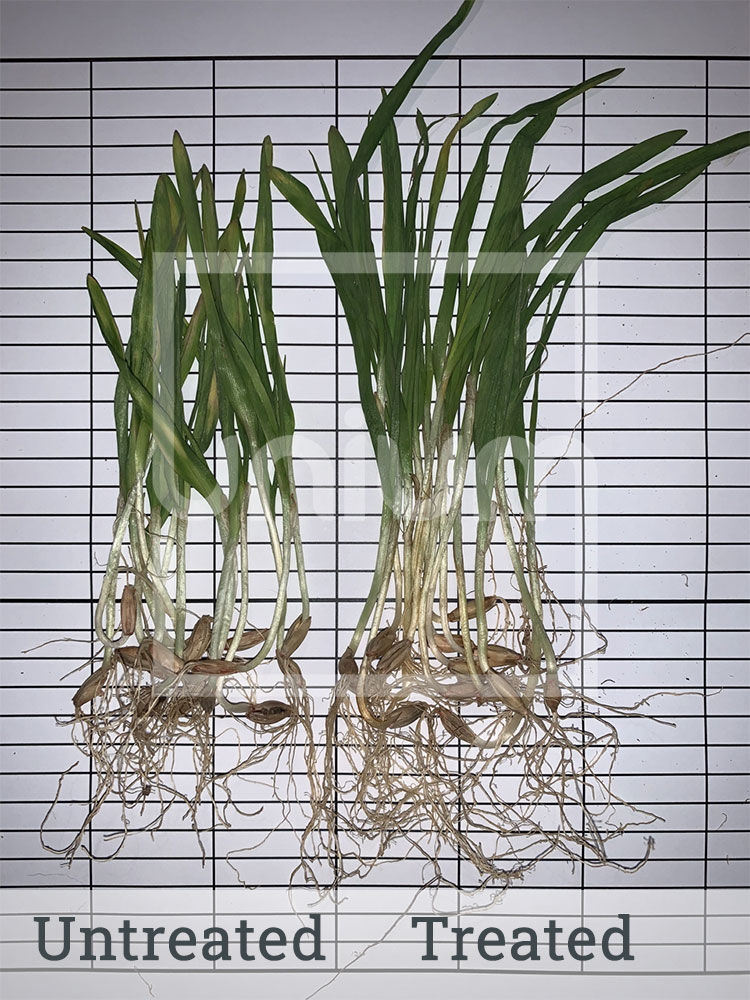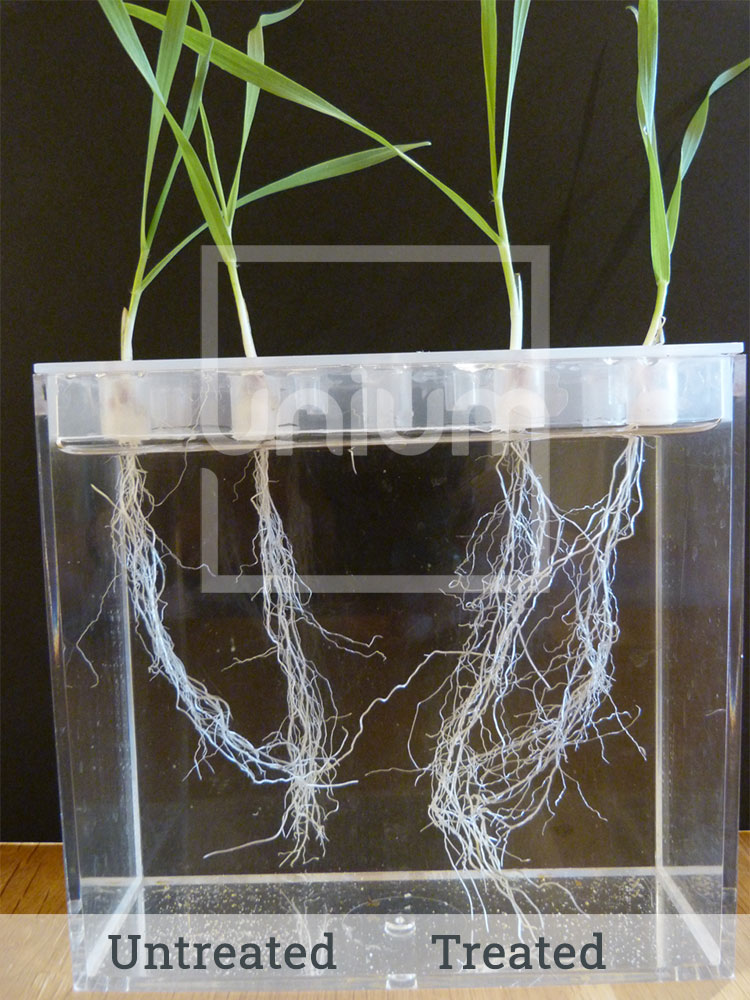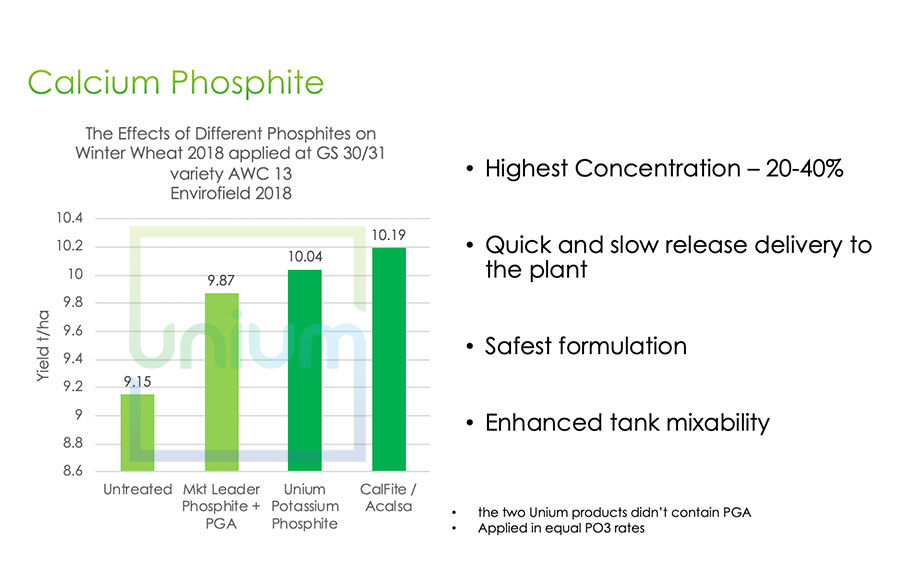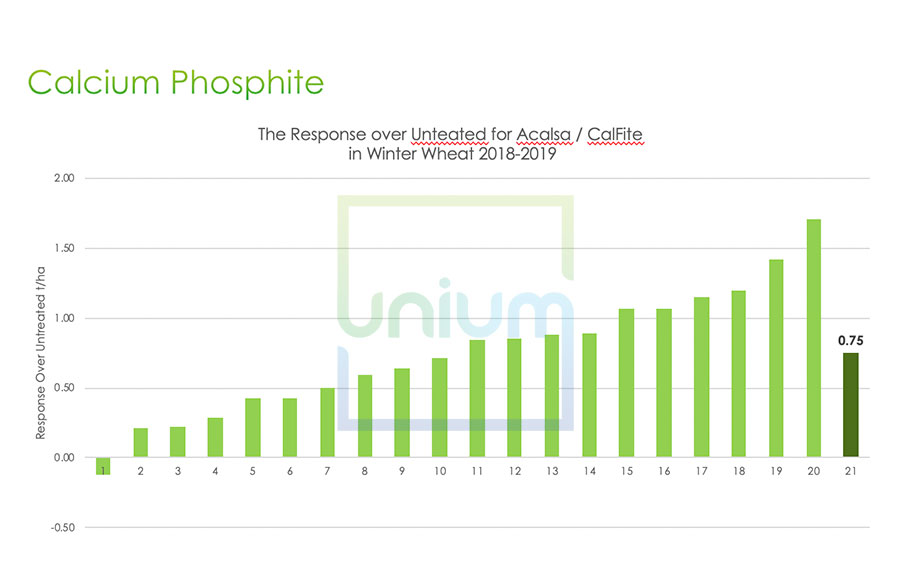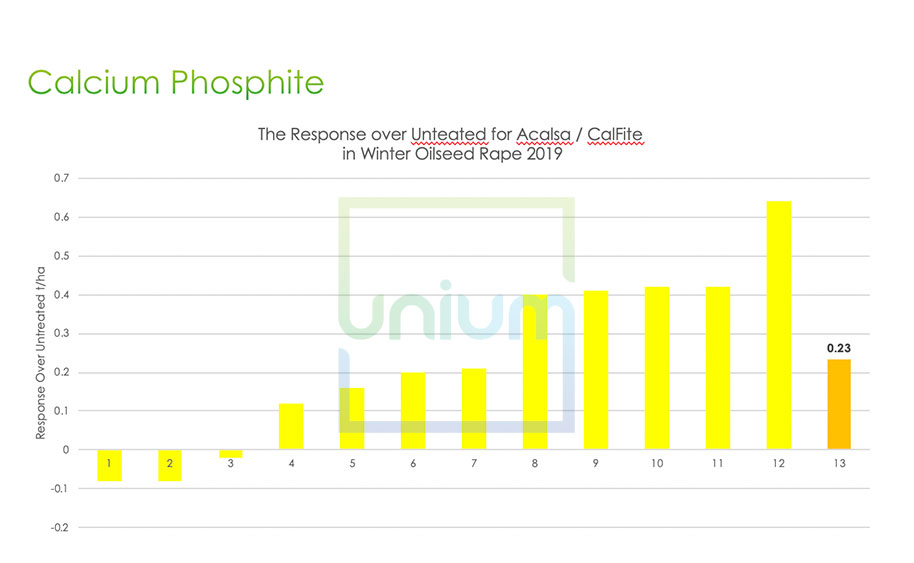Phosphite biostimulants worth considering
Author: Lucy de la Pasture
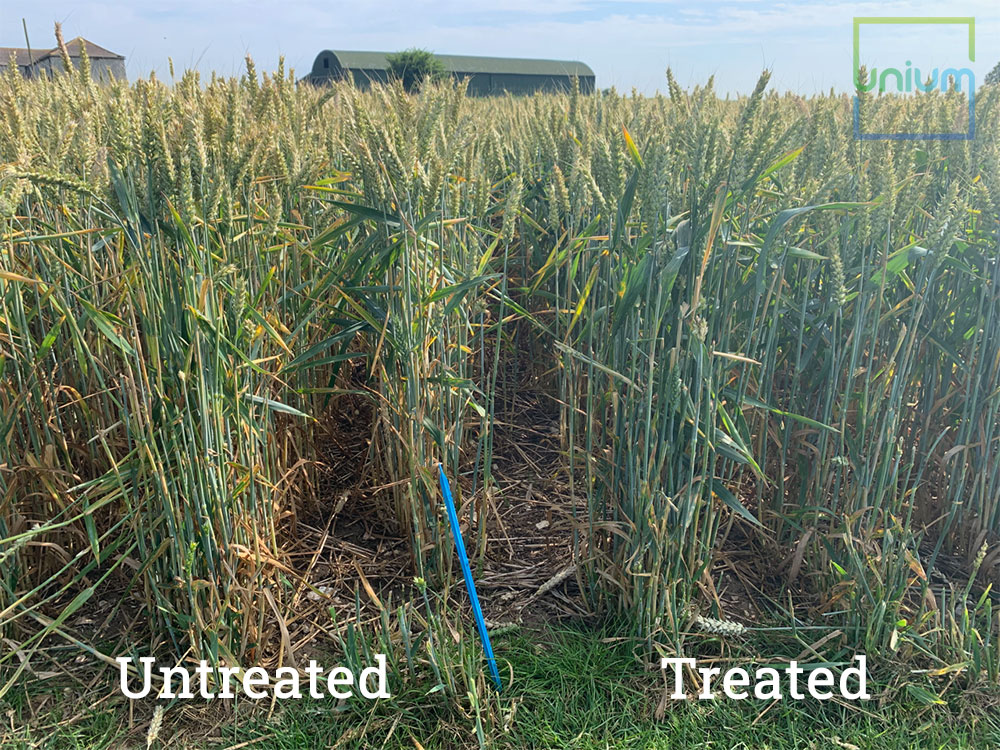
Many crops have been sitting in cold waterlogged soils for months and these conditions are far from ideal for plant root activity, says John Haywood, director of Unium Bioscience.
“Root growth, biological associations and root exudation are all negatively affected by these conditions. Crops are further disadvantaged because nutrients levels are likely to be low, after a winter where leaching has been higher than normal, and denitrification losses are higher than normal due to lack of oxygen,” he says.
Many growers are considering what can be done to give autumn crops a helping hand. John says phosphite biostimulants are worth considering and provide a better option than applying foliar phosphate, which can give inconsistent results.
“Once inside the plant, phosphites will trigger the plant to assimilate more nutrients, especially phosphorus from the soil. It does this by increasing root growth, root health and branching of the root system. It also works by increasing exudation from the roots to enhance microbial association, which is a key means of sequestering more phosphorus from the soil.
“This is particularly helpful under difficult soil conditions to increase the assimilation of many nutrients besides phosphorus, such as potassium, magnesium, calcium and microelements,” he says.
In trials, Unium has demonstrated a 250% increase in root exudation, increased amino acid root concentration, increased root carbohydrate levels after 2 days and increased lipid concentration after application of its phosphite products.
John points out that not all phosphite products are created equally, so choosing a quality stabilised phosphite is important to safely achieve the desired effect.
“Phosphite salts are made when phosphorous acid is neutralised with a base. The resulting salt is unstable and desperately wants to become a stable phosphate. Phosphites (PO3) also have different properties to phosphates (PO4). They are chemically very similar (being only one oxygen molecule apart) but are smaller molecules and more soluble.
“Phosphites achieve four times more soil diffusion than phosphates and between 3-6 times better foliar uptake. This makes phosphite very mobile, heading to areas of growth – shoot tips, roots and meristems – within the plant,” he explains.
“It’s very easy to perform this reaction and create a cheap, unstable phosphite product (often from recleaned acid which contains heavy metals) and it’s a lot more difficult to create a stable one, so growers should be aware there are different quality products available.
“Unstable phosphites are strong reducing agents and will grab an oxygen from many sources – air, spray water, pesticides, nutrients – to become the more stable phosphate. This not only affects the phosphite negatively, but also the other material that has been oxidised,” he explains.
The unique stabilisation in Calfite/Acalsa phosphites from Unium are the result of over 20 years of research. So what does this give the products?
“Crop safety because of their purity – Unium phosphites have the lowest salt levels (which can shock/damage the plant) and the lowest heavy metal concentrations. This also means good tank mixability and best-in-class biologically safety for soil microbes, such as mycorrhizae.”
The concentrated formulation of Calfite and Acalsa has been proven to deliver the best £ for £ performance of any phosphite in the UK per hectare, says John. He recommends applying 0.5 l/ha to backward crops as soon as travel is possible, or application at GS30-31 – where they may safely partner a PGR if needed.


